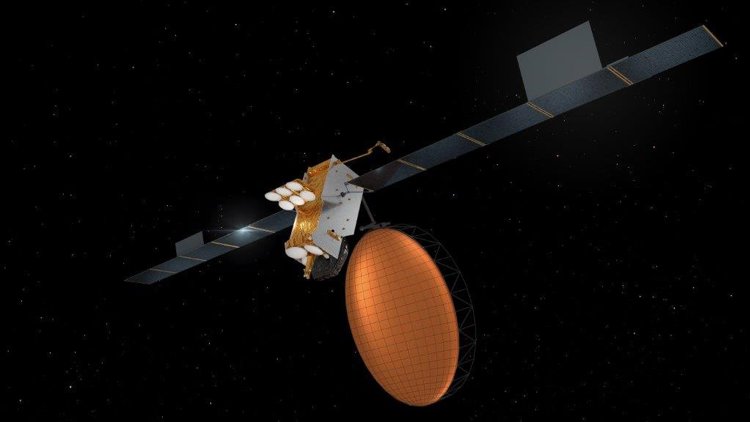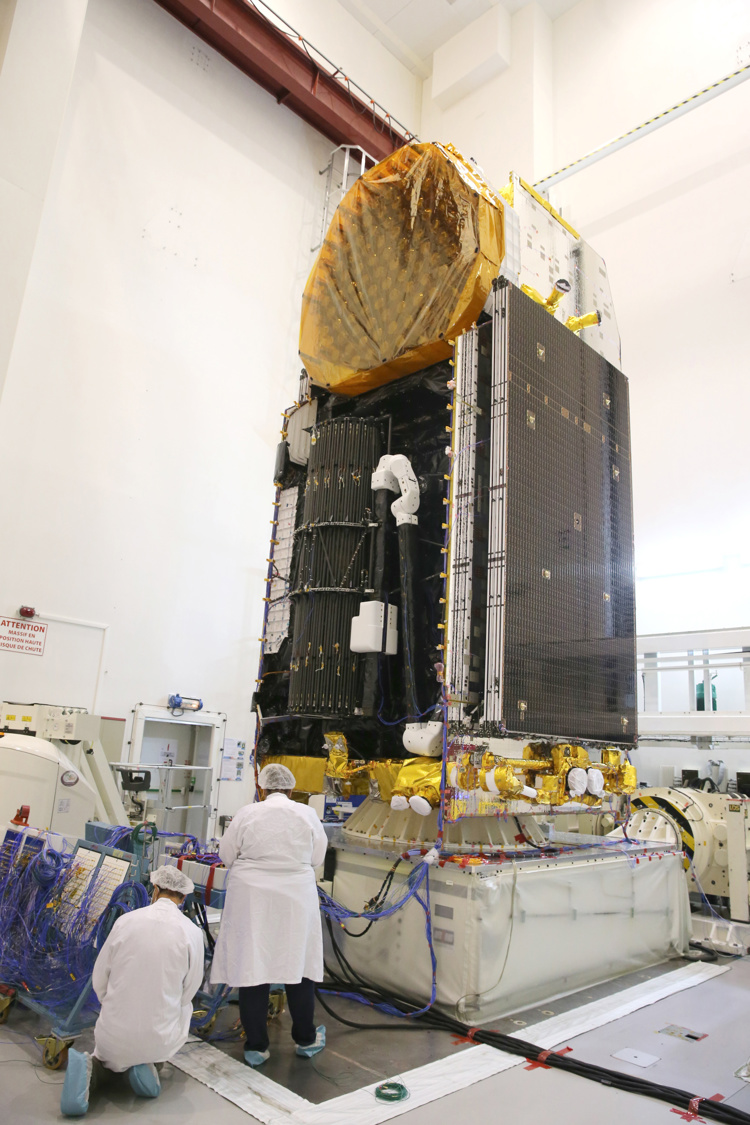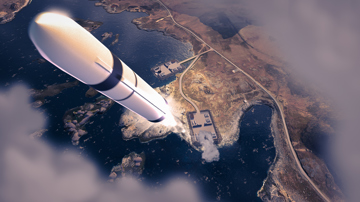All photos courtesy of Airbus Defence and Space.
The ongoing demand for mobile connectivity is driving the need for the universal coverage satellite communications delivers. Inmarsat is empowering isolated communities without reliable cellular coverage to benefit from the emerging global digital economy. Inmarsat's sixth-generation (I-6) fleet will be its first to feature dual-payload satellites.
150 KG OF ADVANCED ELECTRONIC EQUIPMENT
KONGSBERG’s division for Space & Surveillance has provided 150 kg of advanced electronic equipment to the payload of Inmarsat-6 F1 - a record-breaking delivery in the history of the company. It is KONGSBERG’s largest one-time delivery to a satellite-program in the history of the company. The Space & Surveillance division has delivered Inmarsat-6’s Frequency converters, which is a part of the satellite’s payload, and its Command Receivers used to command and control the satellite from Earth.
“We are proud to be a trusted partner of Airbus Defence and Space and Inmarsat. This is an impressive delivery, and our Space-team has done an incredible job of developing and producing 150 kg of world-class advanced electronic equipment to the Inmarsat-6 satellites,” says Harald Aarø, Executive Vice President, Space & Surveillance, KONGSBERG.
Inmarsat-6 is the sixth generation of satellites for Inmarsat, the London-based global mobile satellite communications operator. Inmarsat-6 F1 is based on Airbus’ Eurostar E3000 spacecraft and will be, according to Airbus, the 54th Eurostar E3000 launched and it will be the fifth Eurostar in orbit.
The satellites will fly in geostationary orbit, 35,786km above the Earth.This orbit meets the needs of global mobility and it only takes three satellites to cover the globe.

Communication Beams
Being advanced beamforming satellites, the Inmarsat-program is used to provide mobile satellite communication service to areas without terrestrial network - serving secure, mission-critical military and civil satcom needs, connecting people and equipment on land to support the global digital economy, and meeting the connectivity needs of the maritime- and aviation-industry.
In the two last years, KONGSBERG has delivered 28 frequency converter units to the two first satellites in the Inmarsat 6-program. The units consist of advanced electronic equipment that are crucial to generate communication beams from the satellite. The first 14 units are now ready for launch on the first Inmarsat 6 satellite.
The units are positioned between the digital processors that defines the antenna pattern and the antenna elements. Hence, the accuracy of the beams relies on the performance of the analog RF channels delivered by KONGSBERG. The benefit of using beamforming satellites, is that the communication capacity can be improved for dedicated areas and allow for more communication channels through reuse of frequency bands in different areas. One satellite can generate a large number of antenna beams.
“The KONGSBERG frequency converters is an important part of the payload onboard the Inmarsat 6 satellites, and the performance is critical for the functionality of the system. We are proud to have contributed to this project and are looking forward to a successful launch and start of the communication services,” says Bård Eirik Nordbø, Product Design Responsible, KONGSBERG.
COMMAND RECEIVERS
The Command Receiver-products are used to receive the control signals from the ground stations. These receivers allow the satellite-operators to command and control the operation of the satellites in orbit. The complete operation of the satellite relies on the command signals received by these units. That is why KONGSBERG’s three Command Receivers on each satellite are mission critical for the Inmarsat 6. The Inmarsat-6 fleet of satellites will support a new generation of advanced applications and enhanced global safety services into the mid-2030s and beyond.
«It has been very exciting and valuable to be part of the TT&C C-band and Ka-Band Command Receiver deliveries to INM6. We are very proud to be trusted to deliver these mission critical equipment,” says Øyvind Sollerud Haugen, Product Design Responsible, KONGSBERG.

INMARSAT
Today, Inmarsat own and operate 14 geostationary satellites powering safety and mission-critical mobile broadband communications across the world. In order to meet future demands, Inmarsat will launch seven more satellites by 2024 and is expanding their ground network.
Inmarsat was set up in 1979 by the International Maritime Organization (IMO) to develop a satellite communications network for protecting lives at sea. The company was also the first satellite operator to meet the stringent requirements of the Global Maritime Distress and Safety System (GMDSS) and International Civil Aviation Organization (ICAO) for global safety communications.
I-6 F1 - the first of two Inmarsat-6 (I-6) satellites - is scheduled to launch from the JAXA Tanegashima Space Centre in Japan with Mitsubishi Heavy Industries on 22 December 2021 onboard its H-IIA Launch Vehicle No. 45 (HIIA F45).
Tune in to watch the launch of I-6 F1 from the JAXA Tanegashima Space Centre.




